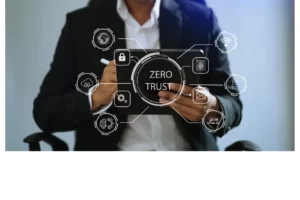Businesses around the world continued to find themselves at the crossroads of a torrent of new cyberattacks. In 2021, the cyber threat landscape in the country after the country became more treacherous, not less. Especially Emails – That allows easy entries into corporates that deal with sensitive personal information. Statistics say 99% of Cyber Threats begin with Email.
Every organization should have an email security strategy designed to help minimize the security risks of corporate email. Decreasing email security-related risks can have a dramatic impact on an organization’s exposure to cybersecurity threats. These email security best practices outline important first steps that an organization should take to secure corporate email communications.
- Control device access to email attachments: Prevent total access to sensitive email attachments on vulnerable unmanaged devices (BYOD) while permitting full access to secure managed devices.
- Ensure confidentiality of sensitive communications: Enable secure delivery of email communications and eliminates the traditional barriers of cost and complexity by offering easy administration.
- Identify explicit images to enforce acceptable use: Proactively monitor, educate, and enforce company email policy for explicit or pornographic image attachments.
- Spam and phishing protection: Detect unwanted spam and unsafe phishing emails, allowing customers to block, quarantine, or take other actions.
- Educate users to improve security awareness: Unique phishing education with feedback capabilities educates employees as they make mistakes, helping them to better learn and understand safe email best practices.
- Set up Two Factor Authentication (2FA): Email users must protect their email accounts using Two-Factor Authentication (2FA). In a 2FA environment, a password is just one piece of the puzzle to access an email account; users need the other pieces to authenticate and gain access.
- Employ Endpoint Protection: Deploy an email dedicated anti-virus/anti-malware solution to scan files, attachments, and websites and identify email-borne attacks, including malicious attachments and fake URLs. This solution could stop Malware and prevent users from opening attachments or malicious links.
- Use Email Protection Software: Business Email protection software such as Proofpoint provides basic email security capabilities, including anti-phishing, anti-spam, anti-malware, and anti-virus.
It takes considerable experience to implement robust email security in any organization. Consult Uniware Systems – ProofPoint an Email Security Solution Partner in Chennai. We have real and documented case studies that capture the business benefits of implementing Email Security solutions like Proofpoint.
Talk to our Email Security Consultant. Get a Free Consultation.







